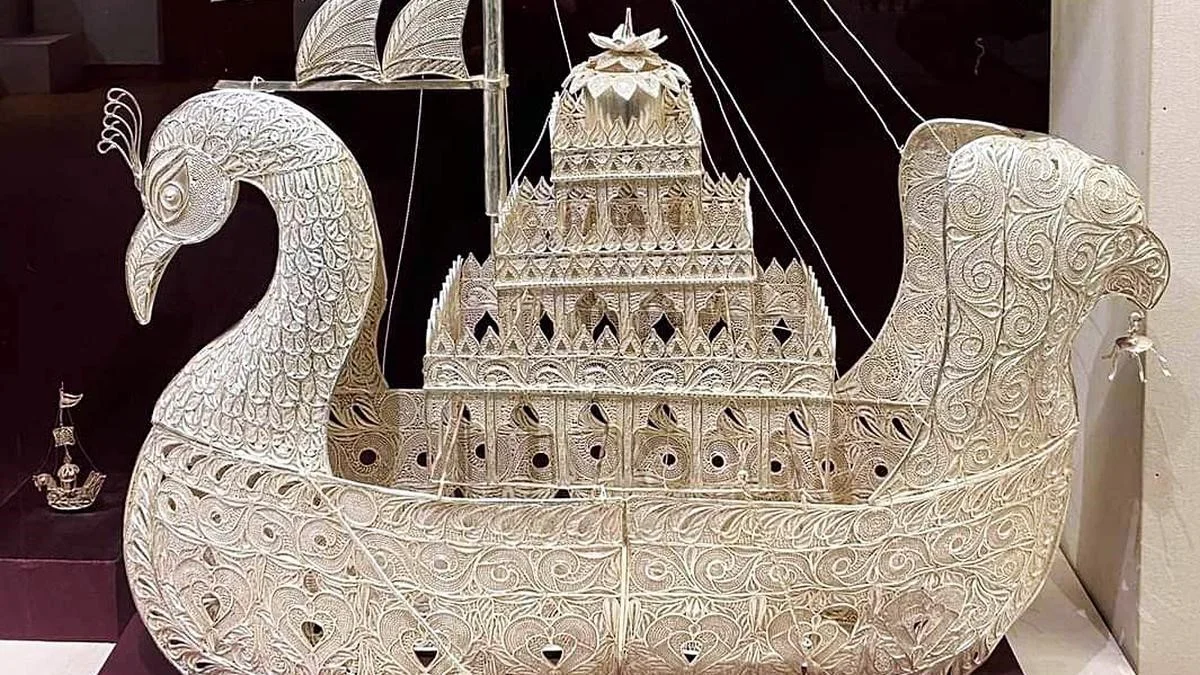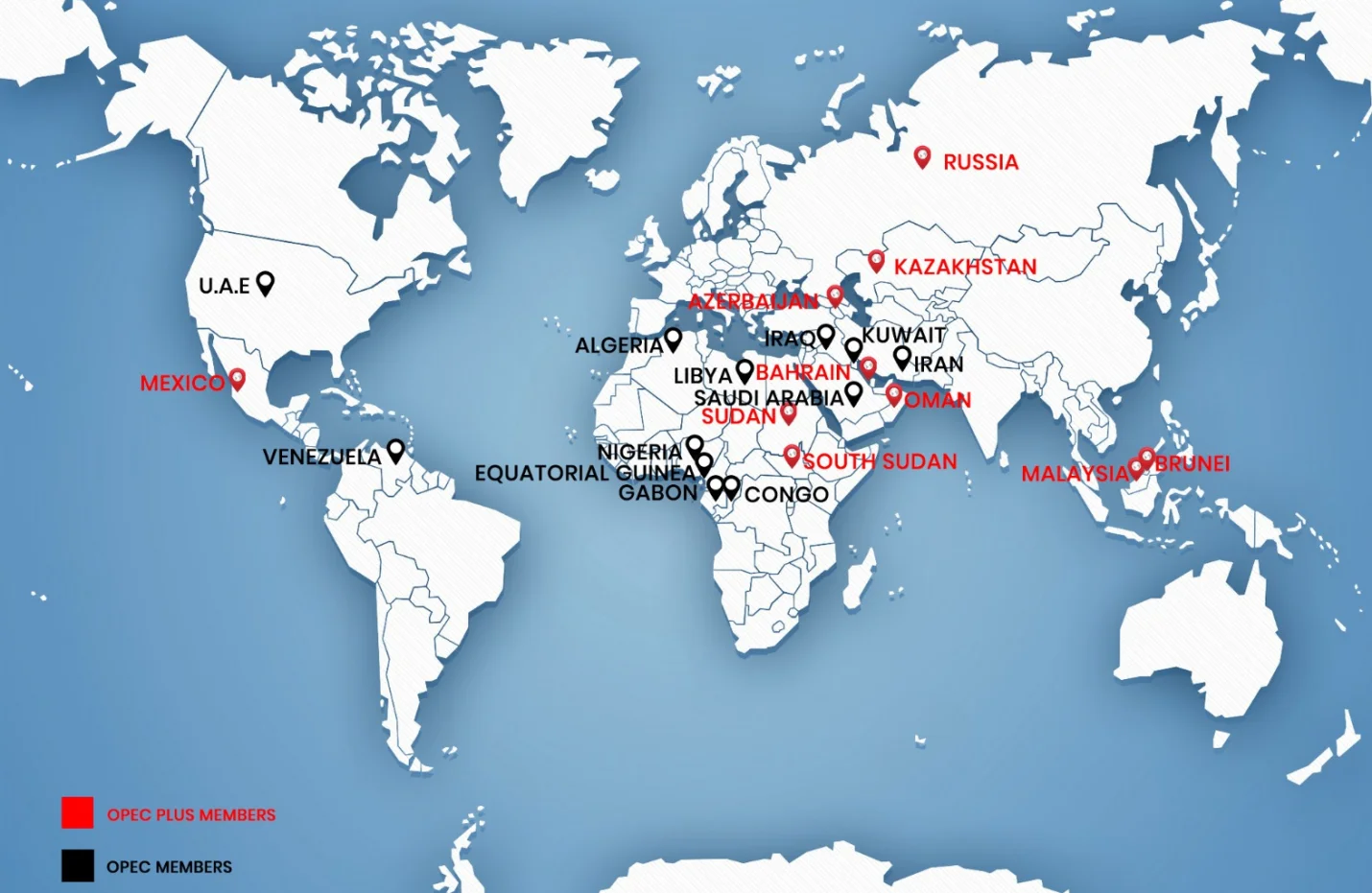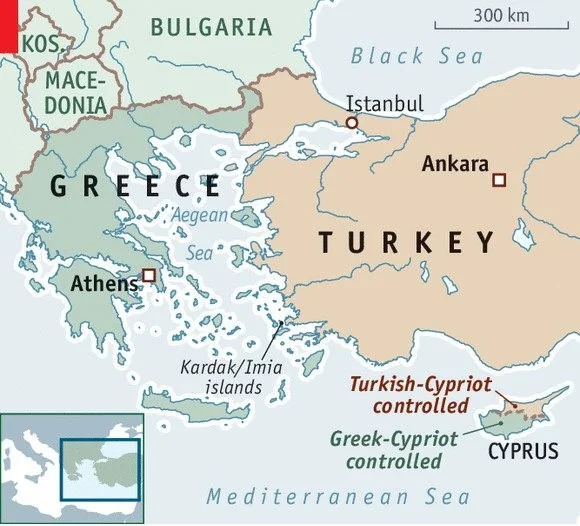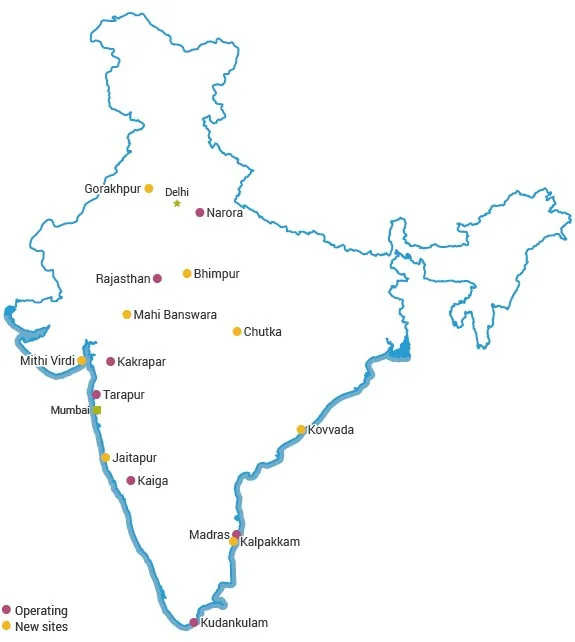GS Paper 1
Kaleshwaram Lift Irrigation Project (KLIP)
Context: An expert committee set up by the National Dam Safety Authority (NDSA) will examine the Kaleshwaram Lift Irrigation Project (KLIP).
The Telangana government, alarmed by the sinking of the piers of the Medigadda barrage, had written to the NDSA to conduct a thorough probe into the barrages of the KLIP.
| Relevance:
· Prelims: Geography: Location of important projects · Mains: Distribution of Key Natural Resources |
Analysis
- The Kaleshwaram Multipurpose Lift Irrigation Project, the world’s largest irrigation and drinking water system, was inaugurated in 2019 in Telangana.
- The multipurpose project involves the States of Maharashtra and Telangana and the source of the water is the river Godavari.
- It has many unique features, including the longest tunnel to carry water in Asia, running up to 81 km.
- The project would also utilise the highest capacity pumps, up to 139 MW, in the country to lift water.
- By the time the water reaches Kondapochamma Sagar, the last reservoir in the system about 227 kms away, the Godavari water would have been lifted to a height of 618 metres from its source at Medigadda.
- The project had to be built at such a size and scale because while the Godavari flows at 100 metres below Mean Sea Level, Telangana is located at 300 to 650 metres above MSL.
Benefits of the Project
- Once the project reaches its full operational capacity, it is expected to make Telangana an economic power because farmers will be able to sow two crops, and thousands of crores worth of fishing industry would flourish in the fresh water in this project alongside tourism and water sports.
Additional Information: Polavaram Project
- Polavaram is a multi-purpose irrigation project located on river Godavari in Andhra Pradesh.
- Polavaram project dam being built on River Godavari can help divert and utilise Godavari water to Krishna and other rivers.
- The Jayakwadi Dam in Maharashtra is also planned on Godavari.
National Dam Safety Authority (NDSA)
- The National Dam Safety Authority (NDSA) was constituted under the Dam Safety Act, 2021.
- It seeks to maintain standards related to dam safety, prevent dam-related disasters and resolve inter-State issues in this regard.
Cuttack Rupa Tarakasi (Silver Filigree) got GI Tag
- Context: The famous Cuttack Rupa Tarakasi (Silver Filigree) has been given the Geographical Indication (GI) tag by the Geographical Indications Registry in Chennai.

| Relevance:
· Prelims: Art and Culture · Mains: Indian Heritage and Culture |
Analysis
- Archaeological evidence suggest that filigree was incorporated into jewellery as early as 3500 BCE in Mesopotamia where it is practiced even today as Telkari work.
- According to historians, there is every possibility that the Tarakasi work reached Cuttack from Persia through Indonesia some 500 years ago by sea trade.
- The argument is based on similar workmanship seen in both Cuttack and Indonesia.
Other Products that got GI tag
- Good quality crochet craft was brought by missionaries to Narsapur in West Godavari region of Andhra Pradesh, and now Narsapur is a strong centre for intricate handmade crocheted lace work.
- Ratlam Riyawan Lahsun (Garlic), a variety named after Riyawan village in Ratlam district of Madhya Pradesh also bagged the GI tag along with the Ambaji White Marble, which is formed when limestone is re-crystallised under the earth’s crust due to intense pressure and heat.
- Banglar muslin (one of the popular traditional handloom craft of Bengal), Tripura Risa Textile, Hyderabad Lac Bangles, Majuli Mask of Assam and the Assam Majuli Manuscript Painting are the other products that got GI tag.
Geographical Indication
- A Geographical Indication (GI) is primarily an agricultural, natural or a manufactured product (handicrafts and industrial goods) originating from a definite geographical territory.
- The manufactured goods should be produced or processed or prepared in that territory.
- Typically, such a name conveys an assurance of quality and distinctiveness, which is essentially attributable to the place of its origin.
- A GI registration gives the registered proprietor and authorised users the legal right to the exclusive use of the GI, and no unauthorised person can use the tag.
How a Geographical Indication is Different from a Trade Mark?
- A trade mark is a sign which is used in the course of trade and it distinguishes goods or services of one enterprise from those of other enterprises.
- Whereas a geographical indication is an indication used to identify goods having special characteristics originating from a definite geographical territory.
Daily News Analysis: WTO Talks Stall, Big Cat Alliance Formed
GS Paper 2
OPEC and OPEC Plus
Context: Crude oil futures traded higher as several members of Organization of Petroleum Exporting Countries and allies, known as OPEC+, announced extension of additional voluntary cuts of 2.2 million barrels a day for the second quarter of 2024.
These cuts are part of an agreement among oil producers to boost prices following economic uncertainty.
| Relevance:
· Prelims: Important International Organisations · Mains: Effect of Policies and Politics of Developed and Developing Countries on India’s interests |
Analysis

- The Organization of the Petroleum Exporting Countries (OPEC) is a permanent intergovernmental organization of 12 oil-exporting developing nations.
- OPEC’s objective is to co-ordinate and unify petroleum policies among Member Countries, in order to:
- secure fair and stable prices for petroleum producers;
- an efficient, economic and regular supply of petroleum to consuming nations; and
- a fair return on capital to those investing in the industry.
- It was created at the Baghdad Conference in 1960, by Iran, Iraq, Kuwait, Saudi Arabia and Venezuela, called the five Founding Members.
- The five Founding Members were later joined by: Libya; United Arab Emirates; Algeria; Nigeria; Gabon; Equatorial Guinea; and Congo.
- Some countries which joined the Group but later withdrew their membership are: Qatar (terminated its membership in January 2019); Indonesia (suspended its membership in 2016); Ecuador (withdrew its membership in 2020); Angola (withdrew its membership effective 1 January 2024).
- OPEC and OPEC Plus have their headquarters in Vienna, Austria.
- The OPEC Statute stipulates that “any country with a substantial net export of crude petroleum, which has fundamentally similar interests to those of Member Countries, may become a Full Member of the Organization, if accepted by a majority of three-fourths of Full Members, including the concurring votes of all Founder Members.”
- The Statute further provides for Associate Members which are those countries that do not qualify for full membership, but are nevertheless admitted under such special conditions as may be prescribed by the OPEC Conference.
OPEC Plus (OPEC+)
- OPEC Plus is an alliance between the Organization of the Petroleum Exporting Countries (OPEC) and ten other oil-producing countries (Russia, Azerbaijan, Bahrain, Brunei, Kazakhstan, Malaysia, Mexico, Oman, South Sudan and Sudan).
- OPEC Plus was formed in 2016 largely in response to dramatically falling oil prices driven by significant increases in U.S. shale oil output.
- The world’s largest oil/energy producer, the U.S., is not part of the deal, nor is China or other leading Western producers such as the U.K., Canada and Norway.
Turkey, Greece and the Cyprus Dispute
Context: UN peacekeepers’ role is still vital for ‘precarious’ Cyprus divide even after 60 years.
| Relevance:
· Prelims: Geography: Location in map · Mains: International Relations |
Analysis

- In 1570, the predominantly Greek-speaking Cyprus, an island in the eastern Mediterranean Sea, came under the control of the Ottoman Empire.
- Over the centuries, many Turks settled on the island and a sizeable Turkish Cypriot community grew up.
- By the time Cyprus became an independent country in 1960, the Greek-speaking community made up around three-quarters of the population but Turkish speakers were still a sizeable minority.
What Happened in 1974?
- Relations between the two sides came to a head in July 1974 when the military junta that was ruling Greece at the time staged a coup d’etat so it could annex Cyprus as a part of Greece.
- Responding to this, the Turkish military staged an invasion and captured the northern city of Kyneria, the northern corridor between Kyneria and the capital Nicosia and the Turkish quarter of Nicosia itself.
- A UN-backed ceasefire was eventually declared with a buffer zone running through the country which remains in place today.
What is the Status of Northern Cyprus?
- Cyprus is physically divided with the southern part ruled by the internationally-recognised government and the northern part controlled by Turkey.
- Turkey recognises Northern Cyprus, which takes up around 36% of the island’s landmass, as the Turkish Republic of Northern Cyprus.
- The United Nations recognises it as a territory of the Republic of Cyprus currently under Turkish occupation.
- Cyprus and Turkey have had no formal diplomatic relations since 1974.
GS Paper 3
Prototype Fast Breeder Reactor (PFBR)
Context: The Prime Minister of India will witness the initiation of the core loading of India’s indigenous 500 Mwe Prototype Fast Breeder Reactor (PFBR) at Kalpakkam, near Chennai.
| Relevance:
· Prelims: Science & Technology · Mains: Achievements of Indians in Science & Technology |
Analysis
- PFBR marks the second stage of the three-stage nuclear power programme of India with a “closed fuel cycle”, and the spent fuel from the first stage would be “reprocessed and used as fuel” in FBR.
- A unique feature of this sodium cooled PFBR is that it can produce more fuel than it consumes, thus helping in achieving self-reliance in fuel supply for future fast reactors.
- This is an important step for India towards thorium utilisation in the third stage of the nuclear power programme.
- With “minimised nuclear waste” generated from the reactor and advanced safety features, the FBRs would provide a safe, efficient and clean source of energy and contribute to the goal of net zero.
- Once commissioned, India will be the second country after Russia to have a commercial operating Fast Reactor.

India’s Three-Stage Nuclear Power Programme
- Homi Bhaba devised India’s three-stage nuclear power program in the 1954. It was formulated to provide energy security to India.
- The main aim was to capitalize on India’ds vast thorium reserves while accounting for its low uranium reserves.
- India has only about 2% of the global uranium reserves but 25% of the world’s thorium reserves.
- Due to earlier trade bans and lack of indigenous uranium, India has uniquely been developing a nuclear fuel cycle to exploit its reserves of thorium.
Stage I. Pressurised Heavy Water Reactor
- In the first stage of the programme, scarce natural uranium (UO2)fuelled Pressurised Heavy Water Reactors (PHWR) produce electricity while generating plutonium-239 (Pu-239) as by-product.
Stage 2nd. Fast Breeder Reactor
- The second stage envisages the use of Pu-239, obtained from the first stage reactor operation, as the fuel core (main fissile element) in Fast Breeder Reactors (FBR).
- A blanket of U-238 surrounding the fuel core will undergo nuclear transmutation to produce fresh Pu-239 as more and more Pu-239 is consumed during the operation.
- Besides a blanket of Thorium (Th-232) around the FBR core (Pu-239) also undergoes neutron capture reactions leading to the formation of U-233.
- U-233, thus obtained, would be the nuclear reactor fuel for the third stage of India’s Nuclear Power Programme.
- India has mastered the design and manufacturing of sodium cooled Fast Breeder Reactors (FBR).
- Electricity generated by FBR would be a source of green energy as the waste from the first stage nuclear programme is reprocessed and used as fuel in FBR.
- The spent fuel from this reactor can be fed back into the reactor core several times, till the spent fuel contains only short-lived fission products.
Stage 3rd. Thorium Based Breeder Reactors
- The third phase of India’s Nuclear Power Generation programme is breeder reactors, using U-233 as fuel which would be obtained from the second stage.
- Besides, U-233 fueled breeder reactors, this stage will have a Th-232 blanket around the U-233 reactor resulting in the production of more and more U-233 fuel from the Th-232 blanket as more of the U-233 in the fuel core is consumed helping to sustain the long-term power generation fuel requirement.
- India’s vast thorium deposits permit design and operation of U-233 fuelled breeder reactors.
- The currently known Indian thorium reserves can easily meet the energy requirements during the next century and beyond.
- However, eeventy years down the line, India is still stuck in the first stage. For the second stage, we need the fast breeder reactors.
- A Prototype Fast Breeder Reactor (PFBR) of 500 MW capacity at Kalpakkam in Tamil Nadu, construction of which began way back in 2004, is yet to come on stream.
Quantum-Secure Cryptography in Messaging Apps
Context: Apple recently announced PQ3, a post-quantum cryptographic protocol, to encrypt (convert information or data into a code, especially to prevent unauthorized access) conversations in iMessage to defend “highly sophisticated quantum attacks.”
| Relevance:
· Prelims: Science & Technology · Mains: Science and Technology- Developments and their Applications and Effects in Everyday Life |
Analysis
Why is Apple Shifting to PQ3 Protocol?
- Currently, Apple’s iMessage supports end-to-end encryption by default. This mode of protection relies on mathematical problems that could potentially be solved by powerful quantum computers, though such computers are still in the works.
- Apple says extremely well-resourced attackers can mount attacks by taking advantage of the drop in data storage costs.
- Essentially, attackers can store large amounts of today’s encrypted data and file it for future reference.
- And though attackers may not be able to decrypt this data today, they can retain it until it can be decrypted at a later date by making use of a quantum computer.
What are PQ3’s Strengths and Limitations?
- The PQ3 protocol protects communications on iMessage against current and future decryptions.
- It also limits how many past and future messages can be decrypted with a single compromised key, reducing the impact of key compromises.
- But, despite its enhanced protection, the PQ3 protocol, does not address group messaging, authentication against quantum adversaries, or cryptographic deniability.
- Also, messages stored in iCloud may not be protected by this protocol.
- This is not the first time a tech company has announced post-quantum encryption protocols.
- Earlier in September 2023, Signal announced advancements in quantum resistance for the Signal Protocol.
- The upgrade added a layer of protection against the threat of quantum computers being built for the future.
Facts for Prelims
World Wildlife Day (WWD)
- United Nations World Wildlife Day (WWD) is celebrated every year on 3 March to celebrate wild animals and plants.
- The WWD2024 Theme is Connecting People and Planet: Exploring Digital Innovation in Wildlife Conservation.
- The date is the day of the adoption of the Convention on International Trade in Endangered Species of Wild Fauna and Flora (CITES) in 1973
- CITES plays an important role in ensuring that international trade does not threaten the species’ survival.
Swachhata Green Leaf Rating (SGLR) Initiative
- In a major move to revolutionize sanitation practices in India’s burgeoning tourism industry, the Department of Drinking Water & Sanitation (DDWS), Ministry of Jal Shakti, in collaboration with the Ministry of Tourism, has introduced the Swachhata Green Leaf Rating (SGLR) initiative.
- These norms will apply to all categories of public and private facilities, viz., hotels, homestays, dharmshalas, lodges, camps including portable toilet facilities or trekking groups.
INS Jatayu
- INS Jatayu in Minicoy is the second Naval base in Lakshadweep after INS Dweeprakshak in Kavaratti.
- With the commissioning of INS Jatayu, the Indian Navy will strengthen its foothold in the Lakshadweep islands and along with extending operational surveillance, reach and sustenance, it will usher in a new era of capacity building and comprehensive development of the island territories.
- Minicoy is the southernmost island of Lakshadweep which straddles the vital Sea Lines of Communications (SLOCs).
Non-lapsable Defence Modernisation Fund
- The idea of setting up a non-lapsable defence modernisation fund is off the table for now as creating a non-lapsable pool affects parliamentary scrutiny and accountability.
- The 15th Finance Commission has recommended constitution of a Modernisation Fund for Defence in the Public Account of India to bridge the gap between projected budgetary requirements and allocation for defence and internal security.
- Articles 112-114 & 266 of the Constitution provide that no money can be spent by the Government from Consolidated Fund of India without authorisation through an Annual Budget presented before the Parliament.
- Since authorisation under the Appropriation Act is meant for that particular financial year, the same does not allow operationalization of a Public Fund which is non-lapsable in nature.
- The only funds that are non-lapsable traditionally are those funded through cesses levied for a specific purpose.
